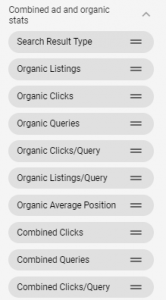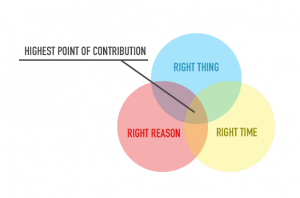Learn how the different types of location-based marketing tactics work so you can utilize them efficiently for your brand.
Location-based marketing is becoming an increasingly popular campaign strategy for brands to attract both new and loyal customers. eMarketer forecasts that marketers will spend $26.5 billion in mobile location-targeted advertising in 2019. It is essential for brands to understand the different types of location-based marketing tactics to utilize them efficiently and stay ahead of the curve. They should also have a baseline understanding of how the privacy of consumers remains protected with location-based marketing.
There are four primary methods of location-based marketing: geofencing, geotargeting, geoconquesting and proximity marketing. Many times marketers will interchange some of these terms for one another, but this is how we coach companies on the terminology.
Geofencing
Geofencing refers to serving advertising or content to a consumer based on their real-time location.
When a person opts in to share their location to a brand’s app and enters the designated geofenced area, they may receive a push notification from an app, a text message, or see location-based content and advertising while using an app in that location. To achieve this, brands use one of many existing technologies to set parameters around the locations consumers will receive notifications, ads or content.
The two most prominent companies providing this type of targeting are Facebook, and therefore Instagram, and Google. Snapchat also provides location-specific geofilters, which brands can use to promote their location, an event they’re supporting or hosting, or raise awareness of their company at an event. Most push notification providers, such as Urban Airship, also provide tools to support location-based alerts.
Geotargeting
Geotargeting refers to serving advertising and content to audiences that visited specific locations in the past. By using historical data, marketers can build campaigns that will reach much more relevant audiences, with location data serving as an indicator of an audience’s real-world preferences.
An example of this approach is a shopping mall that looked to increase their foot traffic this past Black Friday. They built a campaign to reach the audience that visited their location over 90 days to drive return visits. The campaign ran across the mobile advertising ecosystem and was successful enough that they’re adding geotargeting as an ongoing campaign strategy.
Automotive dealers can also make great use of geotargeting but should refine their approach. Instead of building audiences over longer periods, their most relevant audiences are seen on their lots within a narrower time frame. The reason: Once someone shows up at a dealer’s physical location, they’re typically in the final stages of their buying cycle. Marketers shorten their look-back window for building car shopping audiences, looking back two weeks, one week, and sometimes less..
In contrast, a ski resort wouldn’t want a geotargeted audience over such a short time frame. One of their most relevant audiences is last season’s visitors. The takeaway is that it’s crucial for brands and marketers to adapt their location-based marketing strategy to fit their business and their customers.
Geoconquesting
Brands use the geoconquesting tactic to reach audiences that visit theircompetitive locations. For example, Burger King utilized geoconquesting to run a campaign offering the one cent whopper to audiences that had their app open when they visited a McDonald’s location.
This tactic can be used when an audience is nearby at the moment, but also works very well when applied to reach historical audiences.
Proximity marketing
This tactic uses technology such as beacons, near-field communication (NFC), or augmented reality to trigger ad delivery, alerts, or content to a smartphone that is within just a few feet of a specific location. One of the most common use cases is making a payment with a smartphone. When activated, the phone quickly detects the presence of the credit card terminal, enabling a fast and easy payment. There’s also a growing trend for beverage companies to blend this tactic with augmented reality. A shopper in a wine store can use a specific app, such as the Living Wine Labels app, to bring the wine or beer label to life. The camera on the phone views the label, while the app turns the label on the screen into an animated display, educating and entertaining the person.
Privacy and location-based marketing
Brands and agencies using location-based marketing should understand how these audiences are created, and how consumer privacy is protected. A critical step is ensuring that the location data used, whether it’s derived from GPS or some other signal, is opted-in, and that the consumer knows that they’re opting in to share location to help serve advertising. Most, if not all, of the location-based marketing companies in this space, follow this practice today and adhere to codes of conduct from various industry groups. The data should always be aggregated and anonymized, to prevent any individual tracking. This is also a common practice as there is no incentive to build a campaign around reaching a single person. Marketers prefer to reach tens to hundreds of thousands within their target market. Another way to ensure privacy is not using location-based audiences built from “sensitive” locations, such as anything related to healthcare unless the consumer has given explicit consent for this specific use case.
Any successful campaign will rely on multiple different strategies and tactics to be successful. While data will continue to play an important role, the ad copy and creative can be just as important, if not more so. Location-based marketing allows brands and agencies to leverage new technology to ensure their creativity finds the right audience more frequently, and at the right time.
Opinions expressed in this article are those of the guest author and not necessarily Marketing Land. Staff authors are listed here.
Marketing Land – Internet Marketing News, Strategies & Tips
(55)
Report Post







